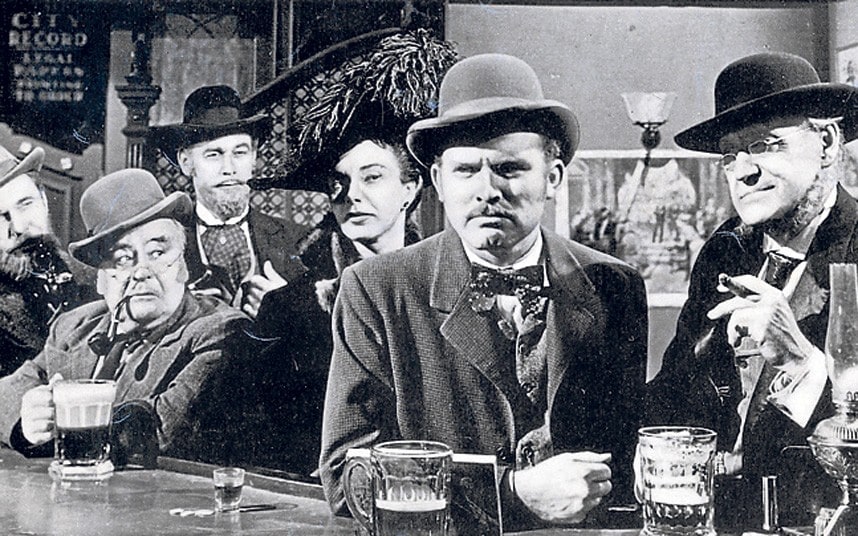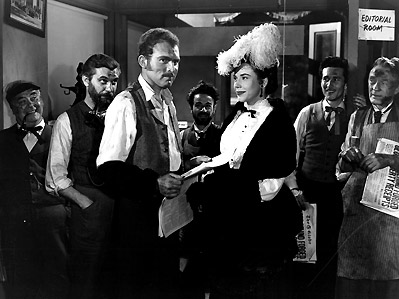From Paris Journal, Film Comment, Summer 1972 (excerpt). –J.R.
Nearly two decades have elapsed between the making of Samuel Fuller’s PARK ROW and its premiere at the Cinema Mac-Mahon. In the interim, Fuller has gone from being a cause célèbre in France to a critical industry in England, where no less than three books on his films have already appeared. A major limitation of this overkill, which is threatening to “assimilate” Douglas Sirk as its next victim, is its absolute humorlessness — a quality that was rarely present in Godard’s or Luc Moullet’s writing on either director in the 50s. Reviewing Sirk’s A TIME TO LOVE AND A TIME TO DIE, Godard affirmed that “ you have to talk about this kind of thing…deliriously, you can be quietly, or passionately delirious, but delirious you have to be, for the logic of delirium is the only logic that Sirk has ever bothered about.” In addition to being about as delirious as the London Times, most of the English writing about Sirk and Fuller suffers from myopia as well. Compare Moullet’s three half-pages on Sirk’s THE TARNISHED ANGELS (Cahiers du cinéma #87) to Fred Camper’s 25 pages in the recent Sirk issue of Screen: the former, for all its giddiness, develops a persuasive stylistic link between Faulkner’s rhetoric and Sirk’s mobile camera; the latter, for all its sobriety, fails to mention the words “Faulkner” or “Pylon” even once.
As a welcome relief from solemn statements about Fuller’s importance as a social commentator, PARK ROW continues to stun through its outrageousness, which at inspired moments becomes a worship of pure energy. Neither as avant-garde as FORTY GUNS nor as controlled as THE STEEL HELMET, it is mainly held together by Fuller’s idealistic enthusiasm for the freedom of the yellow press. A current story in the news reveals a typically Fulleresque zeal. On a certain level, Time’s last-minute “scoop” on the Clifford Irving/Howard Hughes hoax is equal to the hoax itself. The presumably greater authenticity of the Time story is less important than the evident enthusiasm of both Irving and themselves to “make history,” forge myths. Reporting its own efforts, Time brags that “a friend of Irving’s compared [Time’s New York bureau chief] to ‘Ahab, going after the white whale, holding on, holding on, like it’s his last great moment.’ In analogous fashion, Fuller’s pleasure in mythologizing the press is indistinguishable from the press’s own melodramatic bents; that is his authenticity. Like Disney’s and Riefenstahl’s grander visions of perfection, Fuller’s are bound up in narcissistic enclosures of self-absorption, but his infinitely smaller means require his will to triumph not over the cosmos, but on the next block. Expressed through his grubby sets, brutal actors, and street-long fistfights, this exhilaration culminates in the hero-editor smashing the brains of a villain against a statue of Benjamin Franklin -– a fair equivalent to Fuller’s own victory against the pressures of a week’s shooting schedule and a quickie budget. Like the milieu he depicts, his film seems motored more by nerves and muscle than by brains or money. But in its use of the sensationalist press as a means for expressing some of the excitement possible in making films, PARK ROW can be considered a vest-pocket edition of CITIZEN KANE: the sweat and intensity of giant presses and harried deadlines match the frenzied power of some of the camera movements and cuts.



